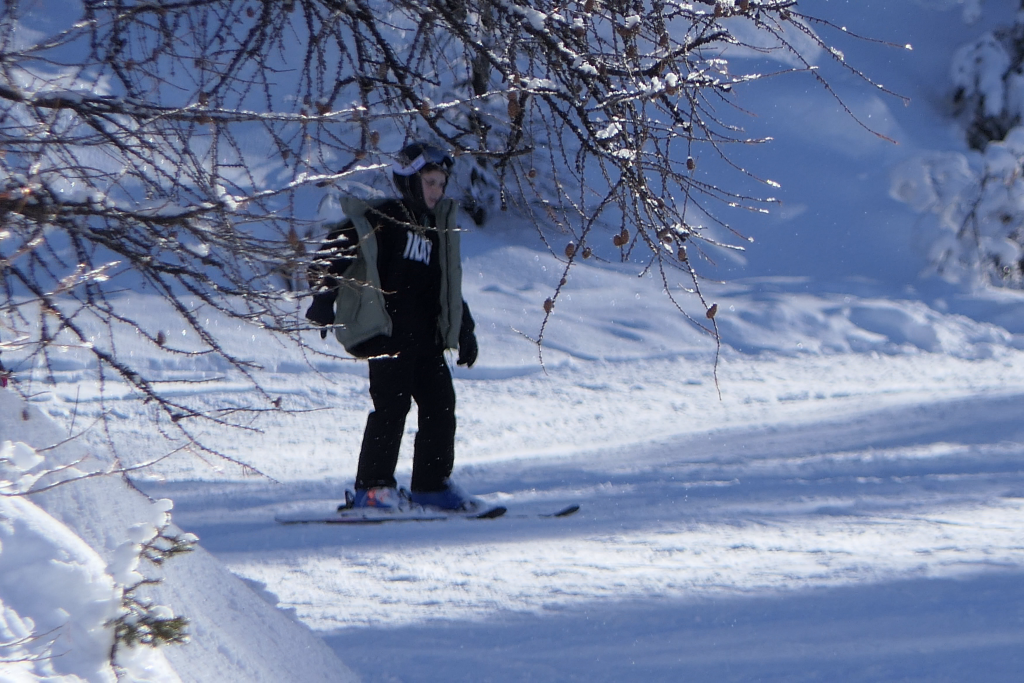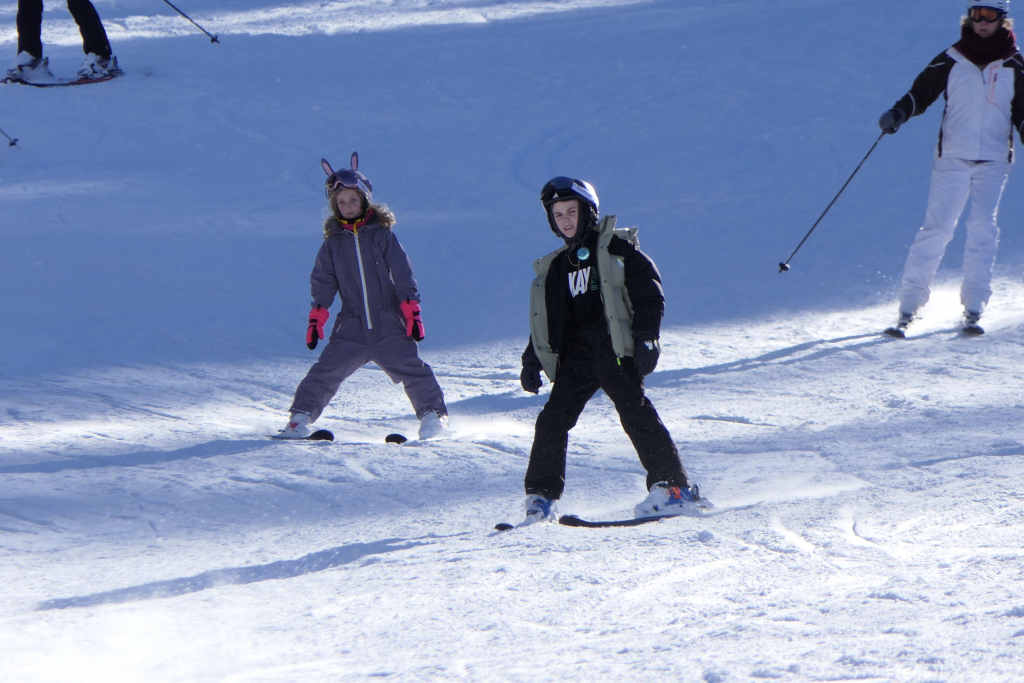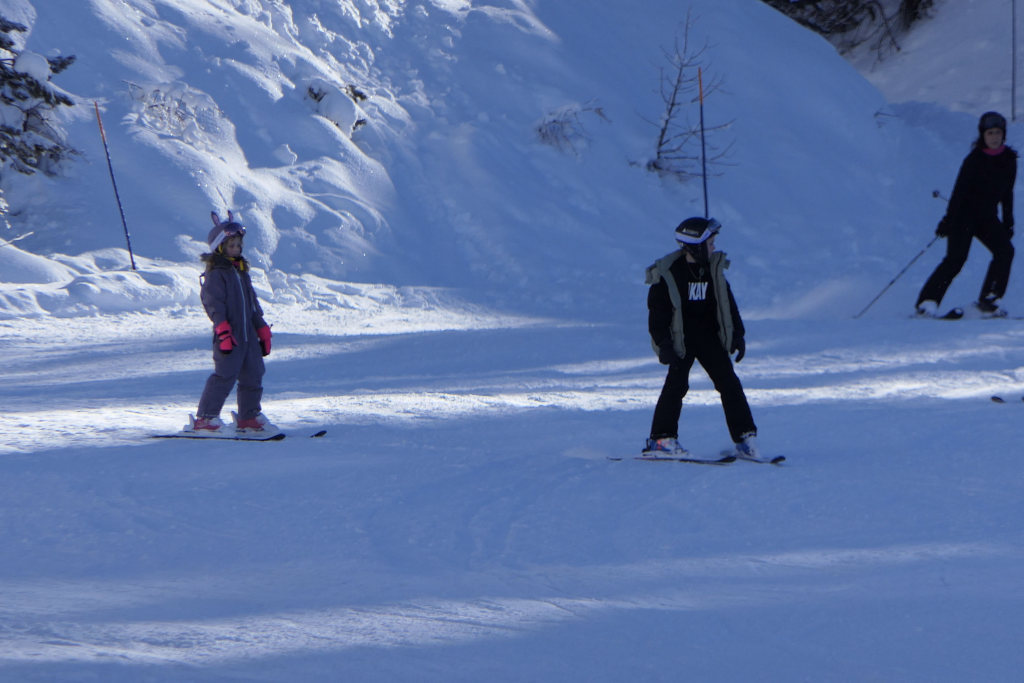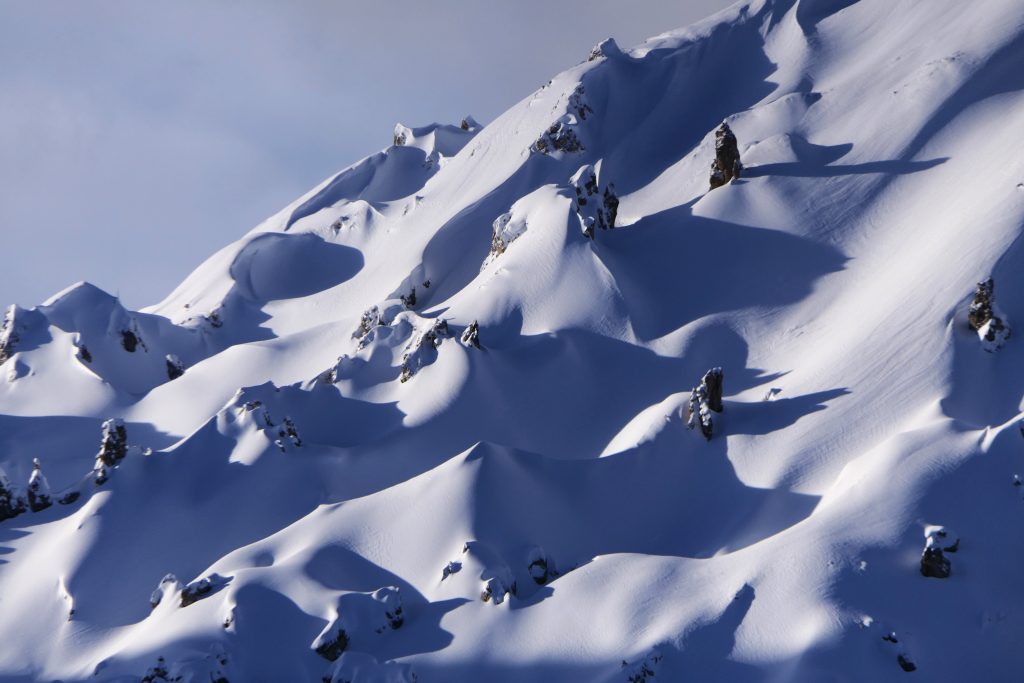First blue run – using “dynamics” which they both picked up very quickly.
Once on the snow we started with skating exercises on flat terrain. Only Flo was able to skate straight away but everyone succeeded – even little Jackson. Skating is really what skiing is all about so any time spent developing skating coordination and actions is time well spent. (but tiring)
Due to everyone have had three days of snowploughs we had to accept that the plough would be used – but the legs do opposite things when used in skating and ploughing. First of all we had to be aware of what those things were.
Skating
- Skis diverging
- Legs turned outwards at the hip joints
- Falling forward (between the skis) to move
- Adductor muscles (inside, top of the legs) tensed to stop the knees being pulled outwards and the skis from flattening
Braking Plough
- Skis converging
- Legs turned inward at the hip joints
- Adductor muscles completely relaxed – not trying to edge the skis – trying to get as wide a plough as possible from the hips
Invisible Magic Wall
My attention was mostly focused on protecting Jackson – who was very enthusiastic. We did coordination exercises together trying to get Jackson to be able to move his limbs into skate or plough configurations both with and without skis on.
Seeing that the other three were able to freely circle up and down the nursery slope I let them do this and watched to see they were in control. Their attempts to turn were clearly based on mainstream ski teaching – transfer weight to the outside ski (left ski to go right etc.). The next thing was to show them how to move correctly – even in the plough – skating the body mass into the turn in the direction you want to go. Xavi immediately recognised that this is how you would move on a football playing field. I think Freddy might have missed part of this explanation.
When you let the skis run straight ahead (parallel) an invisible wall appears either side of your body. If you believe in the magic then you can push your body against the wall (like blocking a door with your shoulder) and it will never let you fall – but instead will make a turn in the direction you are pushing.
For adults this is called “Dynamics” – the rest of this blog entry is explanation for the grownups…
The result is that both Xavi and Flo were comfortable and secure to go straight into a blue piste.
Basic Dynamics
- Skis must be travelling forward – like a bicycle
- This is mainly about using the outside leg (start of new turn) to push the centre of mass into the centre of the new turn – for the whole duration of the turn
- There is no “balance” when skiing – dynamics is the physics of disequilibrium
- You are looking for stability from organised accelerations (ski technology!)
- Notice in the photos below the outside leg is essentially straight in a skating action (flexion for absorption and other purposes is primarily at the hip joint)
- The centre of mass goes down toward the snow – and to complete the turn it comes back up – like a motorbike in a turn
- There is no “Centrifugal Force” acting on the skier – only a deflection inward away from a straight line. This deflection is used to lift the skier up at the end of the turn – which involves “finishing” the turn – I.E. turning almost back up the hill.
- Remain square to the skis (follow the skis around the turn with your body) until you are really comfortable with movement of the centre of mass and clearly aware of moving it.
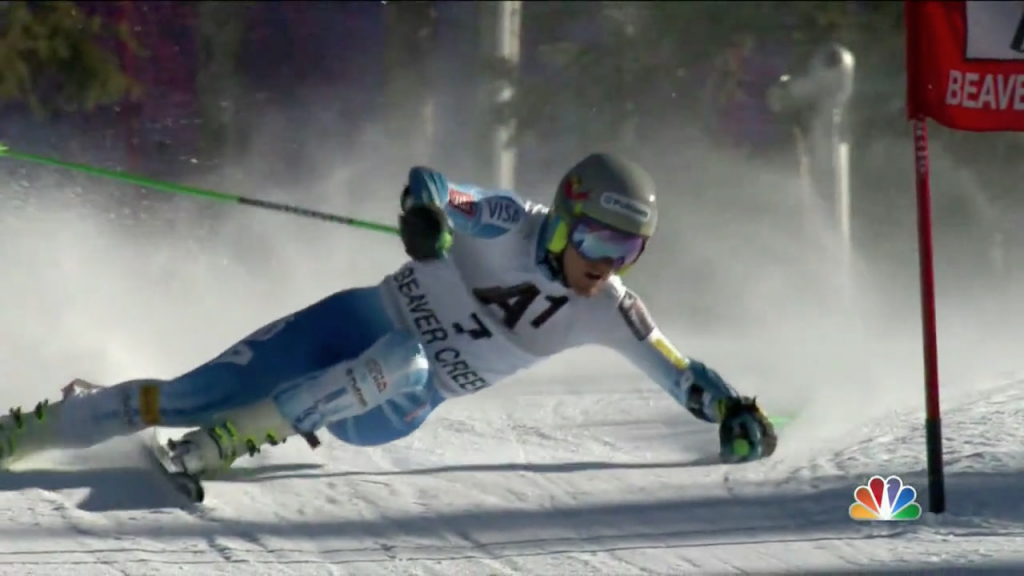
Skating/Adductors
Skiing is just disguised skating. The main difference is the skis are wide and have two edges When diverging the skis outwards at the tips into a skating stance the skis want to flatten on the snow and the stiff shaft of the ski boots will pull the knees outward. The adductor muscles need to be engaged to hold the skis on their inside edges. This is a pattern of muscle use – the adductors of both legs contracting – that should be maintained when skiing parallel.
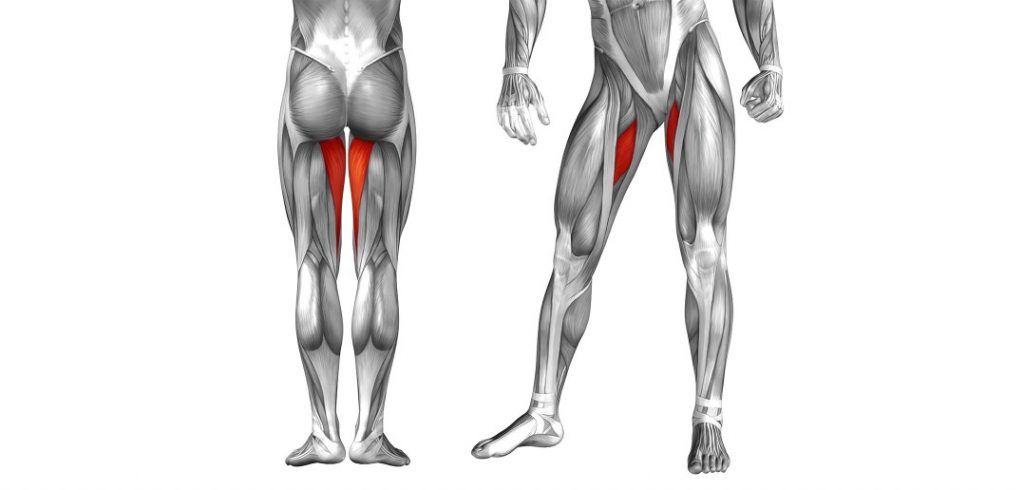
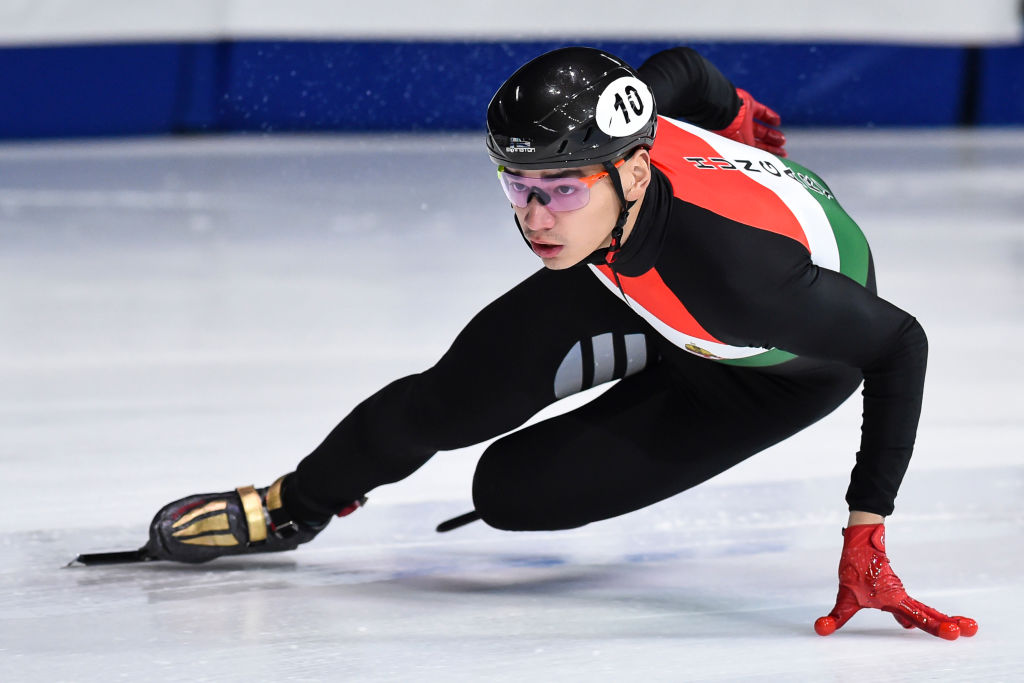
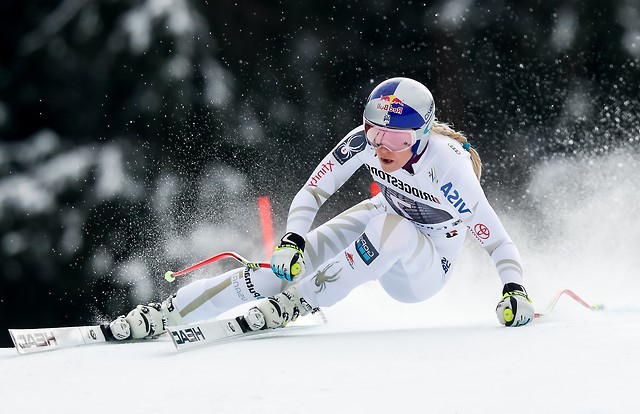
Today’s photos…
